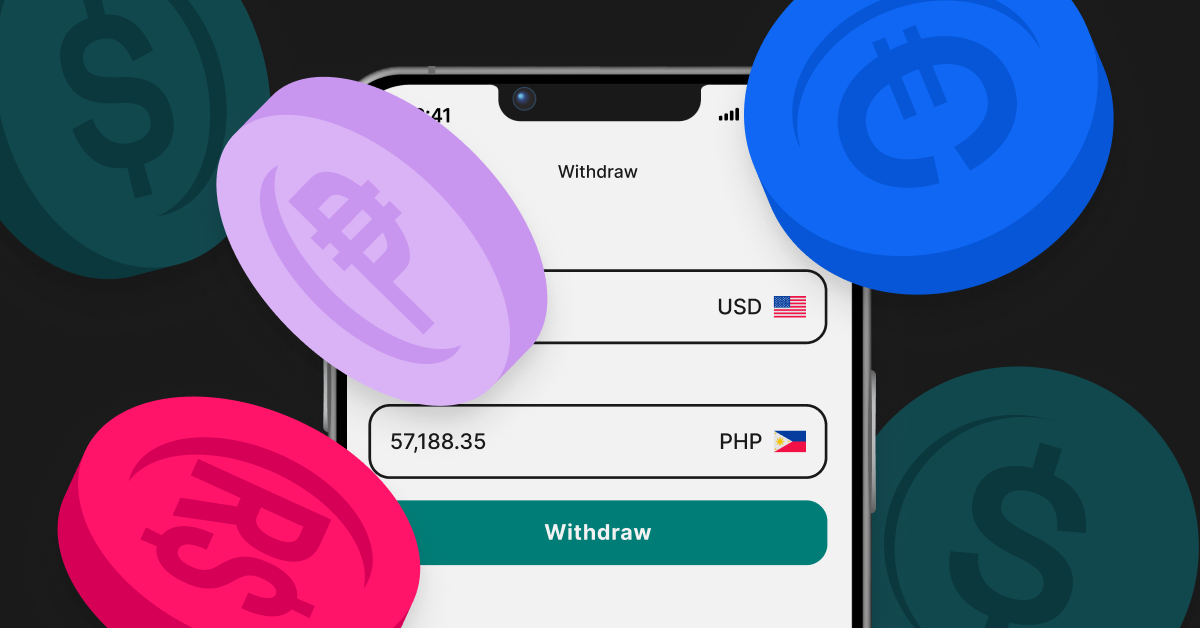How to get paid by U.S. clients as a freelancer in 2026

For freelancers outside the U.S., working with American clients offers strong earning potential. U.S. companies increasingly hire global talent across design, development, marketing, and consulting. But winning the work is only half the challenge.
You also need to know how to build credibility, find opportunities, and set up reliable ways to receive payment in U.S. dollars.
This step-by-step guide covers how to:
- Build a freelancer foundation that attracts U.S. clients
- Find high-paying opportunities through the platforms, networking, and outreach.
- Receive payments in USD safely and efficiently
- Stay compliant with your country’s rules while keeping more of what you earn.
1. Build your freelance foundation
Before focusing on payments, you need a professional setup that convinces U.S. clients to work with you.
Create a professional portfolio
A portfolio makes you stand out. Build a website or online profile that highlights:
- Samples of your best work.
- Testimonials from past clients.
- Case studies that show results.
This gives U.S. clients confidence that you can deliver. If you don’t have a personal website yet, consider building one. Even a simple page with work samples, bio, and contact details signals professionalism.
Optimize your online presence
LinkedIn is one of the first places U.S. clients check. Update your profile photo, headline, and summary. Add keywords related to your niche so recruiters can find you. If you’re a designer, consider Behance or Dribbble. If you’re a developer, update your GitHub with recent projects.
Check out tips on optimizing your LinkedIn profile to attract the right opportunities.
Define your niche and services
The U.S. freelance market is competitive. Instead of trying to do everything, narrow your focus. Define:
- What you do best: writing, software development, design, consulting.
- Who you help: startups, small businesses, agencies.
- How you charge: hourly, fixed project, retainers.
When you’re clear on your niche, it’s easier to market yourself.
2. Find U.S. clients
Once your foundation is ready, it’s time to find opportunities.
Use freelance platforms
Freelancer platforms make it simple to connect with U.S. clients. They provide built-in contracts, payment systems, and client reviews. While they charge fees, they’re a good way to build your initial client base.
Options include:
- Upwork: General platform with jobs across industries.
- Fiverr: Best for creative and short-term gigs.
- Toptal: High-end platform for vetted professionals.
- Deel: Used by companies for payroll and contractor management.
Network actively
Networking is free and powerful. Join Slack or Discord groups relevant to your niche. Participate in LinkedIn groups. Attend online industry meetups where U.S. businesses look for talent. A recommendation from a peer often carries more weight than an online profile.
Direct outreach and marketing
Don’t wait for clients to find you. Research companies in your niche. Reach out with short, personalized emails that show how you can solve their problems. For example, if you notice a company’s website loads slowly, offer optimization services with a quick insight in your pitch.
Leverage content marketing
Publishing valuable content builds trust and visibility. Write articles, create short guides, or record video tutorials showing your expertise. This attracts U.S. clients who search for solutions in your field.
For more tips, see how to get hired by U.S. business clients.
3. Get paid by U.S. clients
Once you land the work, the next step is securing payment. In 2025, freelancers abroad have more choices than ever. Each has trade-offs in cost, speed, and convenience.
Use dedicated payment platforms
Platforms like Higlobe, Wise and Payoneer, and let you open USD accounts and receive client payments directly. They handle currency conversion and allow local withdrawals. Fees vary but are usually lower than traditional bank wires.
For comparisons, see best international payment apps for freelancers.
Utilize platform payment systems
If you’re hired through Upwork, Fiverr, or Deel, you can accept payments directly through their system. Clients fund projects via the platform, and you receive payouts once work is approved. This reduces risk but includes service fees.
Consider wire transfers or PayPal
Some U.S. clients prefer direct payment. Common methods include:
- Wire Transfers: Reliable but costly ($20–$50 per transaction). Works best for large, infrequent payments.
- PayPal: Widely accepted but includes higher fees and unfavorable exchange rates. Convenient for smaller jobs or clients who already use it.
4. Stay organized and compliant
While this guide is educational, keep in mind that tax laws and foreign income regulations vary by country. Freelancers may be required to report earnings or meet specific filing requirements depending on local laws.
Always:
- Track your invoices and payments.
- Store records in accounting software.
- Consult a licensed accountant or tax advisor in your country for compliance.
For general reading, you can explore freelancing basics or income tax considerations.
Protect your earnings from hidden fees
- Freelancers lose significant income to hidden costs. A few tips to minimize them:
- Compare providers’ exchange rates, not just visible fees.
- Negotiate with clients to cover transaction fees.
- Consolidate smaller payments into one monthly invoice.
- Use platforms that offer transparent guarantees.
- Consider safe yield opportunities for idle USD balances. For example, see Higlobe Earn.
Conclusion
Getting paid by U.S. clients in 2026 is easier than ever, but it requires the right foundation.
Start by building a portfolio and online presence that proves your value. Use platforms, networking, and outreach to find consistent opportunities. Then, choose a payment method that balances speed, cost, and security.
Whether you rely on platforms like Upwork or Fiverr, payment providers such as Higlobe, or direct transfers through PayPal or wires, the key is to stay informed. Compare your options, track your earnings carefully, and seek professional advice for taxes and compliance in your country.
Freelancing is about independence, but that independence comes from being prepared. With the right approach, you can focus less on chasing payments and more on growing your business with U.S. clients.
Ready to simplify how you get paid by U.S. clients in 2026? Learn more about Higlobe and start keeping more of your earnings today.









